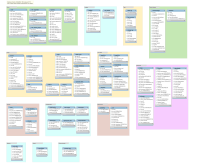
Photo from wikipedia
Abstract In the past few decades, the travel behaviour literature has devoted increasing attention to understanding the demand for leisure and social travel and the engagement in leisure activities. Some… Click to show full abstract
Abstract In the past few decades, the travel behaviour literature has devoted increasing attention to understanding the demand for leisure and social travel and the engagement in leisure activities. Some of the studies in this field have adopted a social network perspective, acknowledging that it is mainly the people involved motivating such activities and travel. It is in this literature that the present study places itself. We develop a joint choice model to analyse the share of time spent in leisure activities with each social contact, the frequency of interaction by different modes and the ranking in a name generator. We show that these different decisions are linked by an underlying latent factor that we refer to as relationship strength. As this relationship strength cannot be directly observed, we use a number of different indicators for it in measurement models, including what we believe to be a novel use of the position in which a social contact is ranked in the name generator. The study sheds light on the concept of relationship strength, which is believed to be crucial for understanding social interactions and leisure activity engagement. The results of our joint model are in line with expectations and improve the understanding of relationship strength on the basis of the nature of the relationship and homophily measures.
Journal Title: Travel behaviour and society
Year Published: 2020
Link to full text (if available)
Share on Social Media: Sign Up to like & get
recommendations!